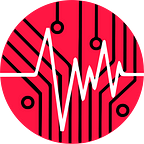During normal breathing, expiratory time is usually twice the inspiratory time. This means that the I:E ratio is 1:2, or 1/3rd to 2/3rd. If you try to find this setting on the ventilator during support ventilation, good luck with that. Someone has decided it's way more convenient to give this setting a different name during support ventilation… it's either the End Inspiratory Cycle (EIC) on Macquets or the Expiratory Trigger Sensitivity (ETS) on Hamiltons. Seriously, Hamilton… the name doensn't even make sense. Also, the setting is a bit counter intuitive, so allow me to explain it.
The EIC (or ETS) is the moment the ventilatory cycles from inspiration to expiration, in other words, the moment the expiratory valve opens (as expiration is passive). The value itself represents the percent of peak inspiratory flow at which the ventilator cycles from inspiration to exhalation. Allow me to illustrate:
Note that it's usually set at around 30%. I'm just using extremes for clarity.
So what happens if we change the EIC?
Remember that if you're considering this, you've already decided that your patient is "ready for support ventilation"!
So who may benefit from a change in EIC?
- If a patient shows double triggering, this could be due to the fact that the inspiration time is too short for this patient. Try lowering EIC.
- If you have a patient with COPD, you may want to allow for a longer expiration. Try increasing EIC.
Can you think of other patients for which you might want to change the EIC?
